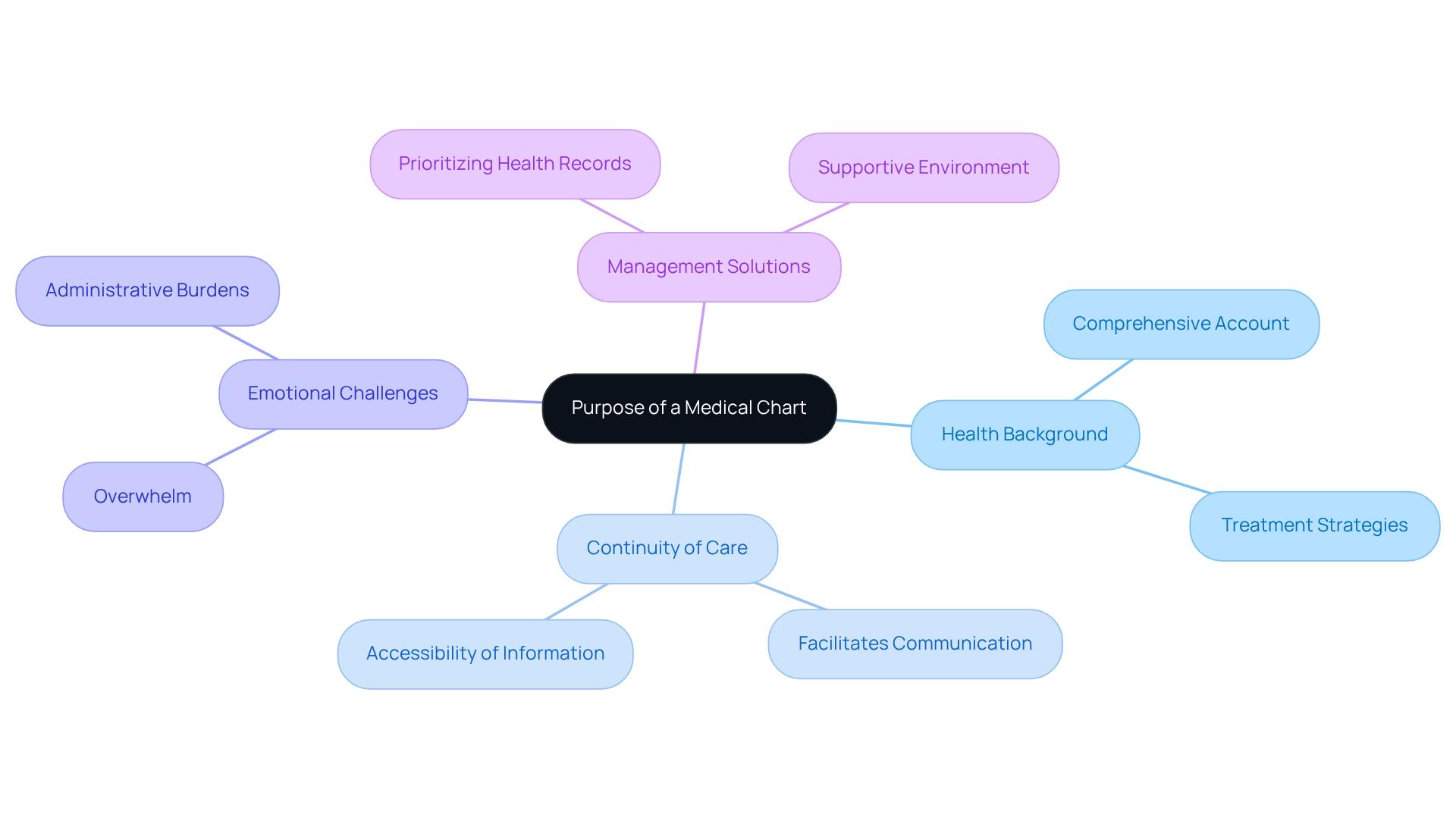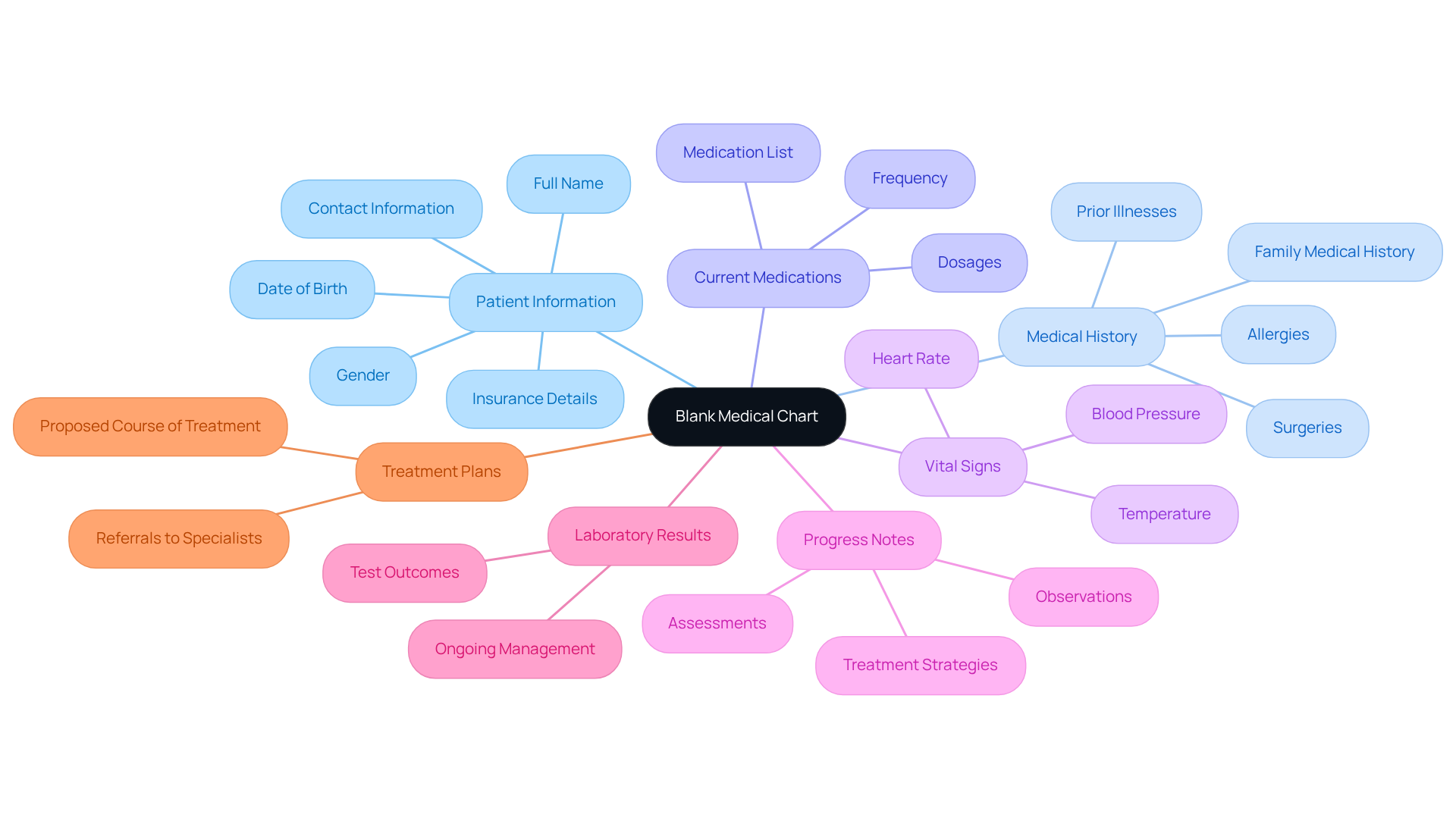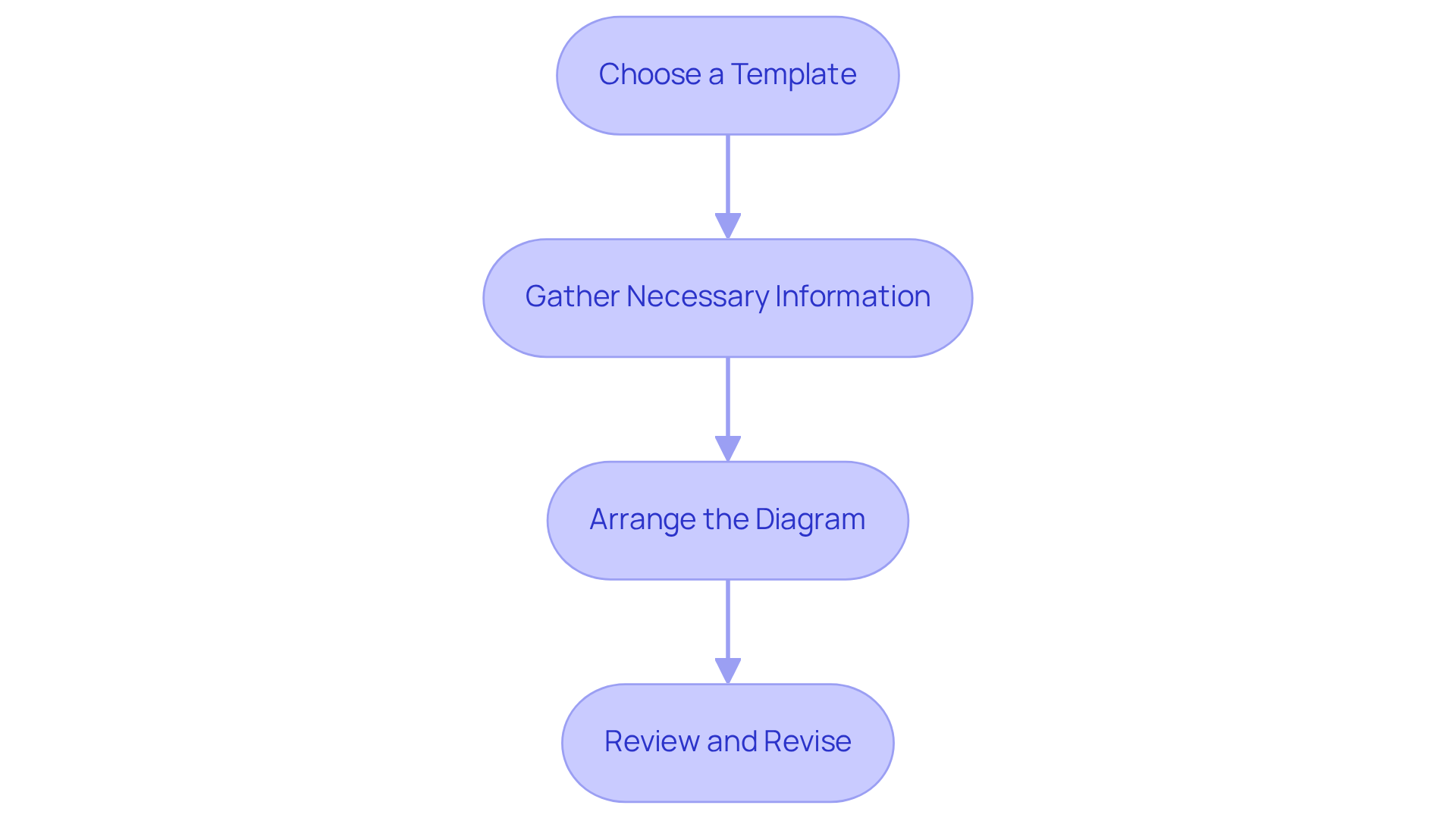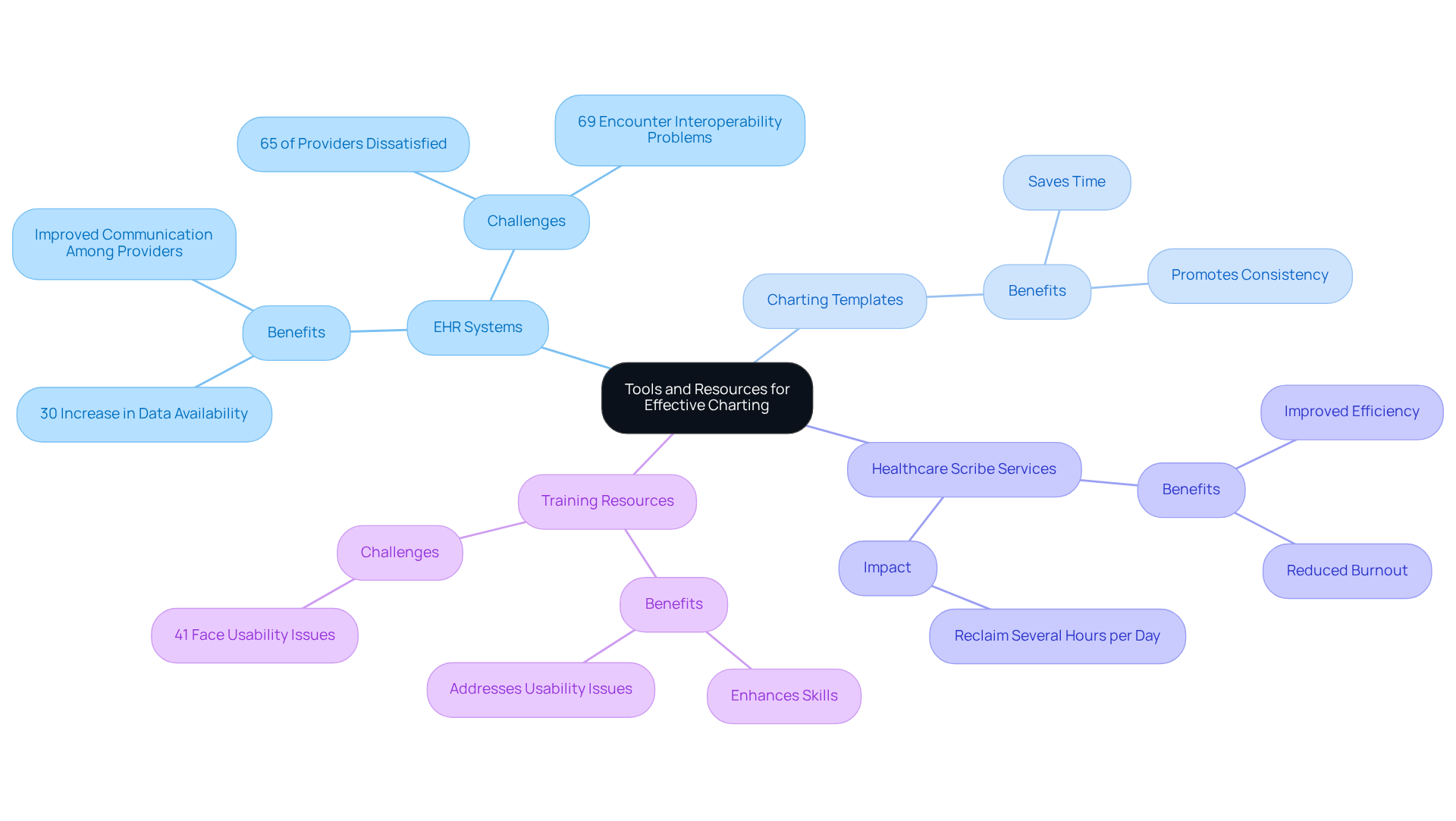Overview
In the demanding world of healthcare, providers often face emotional challenges that can weigh heavily on their ability to deliver care. This article outlines four essential steps for creating a blank medical chart effectively, which can alleviate some of these burdens:
- Select a suitable template
- Gather necessary patient information
- Organize the chart logically
- Review it for accuracy
By following these steps, healthcare professionals can streamline their documentation processes.
Thorough documentation is not just a task; it's a vital part of improving patient care outcomes. The use of structured templates enhances efficiency and helps providers focus on what truly matters—their patients. Reflect on how these steps can transform your daily practice and reduce the stress associated with managing medical records.
By embracing these practices, you can create a more organized and supportive environment for both yourself and your patients. Take the time to implement these strategies and witness the positive impact on your workflow and patient care. Remember, every small step you take contributes to a larger goal of compassionate healthcare.
Introduction
Creating a blank medical chart goes beyond a mere bureaucratic task; it represents a vital step toward enhancing patient care and fostering effective communication among healthcare providers. This guide explores the essential components and strategies for developing a medical chart that not only fulfills clinical requirements but also eases the administrative burdens that often weigh heavily on practitioners.
How can healthcare professionals strike a balance between thorough documentation and the urgent need for patient interaction? Reflecting on this question opens a pathway to improving both efficiency and patient outcomes in today’s healthcare landscape.
Understand the Purpose of a Medical Chart
A health record serves as a comprehensive account of an individual's health background, treatment strategies, and ongoing support. It plays a crucial role in ensuring continuity of care and facilitating communication among healthcare providers. Have you ever considered how vital this information is for clinical decision-making? By understanding the purpose of a health record, healthcare professionals can appreciate its importance in enhancing client outcomes. This ensures that all relevant information is readily accessible during visits, allowing for better care and connection with patients.
Recognizing the emotional challenges faced by healthcare providers is essential. Administrative burdens can significantly impact patient care, leading to feelings of overwhelm. How can we alleviate this pressure? By prioritizing the management of health records, we can create a more supportive environment for both providers and patients. This not only improves the quality of care but also fosters a stronger bond between healthcare professionals and those they serve.
Let’s take action together. By embracing the significance of health records, we can enhance our practice and ultimately improve patient experiences. Remember, every detail matters in the journey toward better health outcomes. Together, we can ensure that the information needed for is always at our fingertips.

Identify Key Components of a Blank Medical Chart
A well-organized blank medical chart is not just a formality; it is essential for effective client management. It should encompass several key elements to ensure it is both thorough and functional, addressing the emotional and practical needs of healthcare providers. These components typically include:
- Patient Information: Essential details such as full name, date of birth, gender, contact information, and insurance details.
- Medical History: A comprehensive record of prior illnesses, surgeries, allergies, and family medical history, which can be crucial in understanding risks for individuals.
- Current Medications: An updated list of medications the individual is taking, including dosages and frequency, to prevent adverse drug interactions.
- Vital Signs: Regularly recorded measurements such as blood pressure, heart rate, and temperature, which are essential for monitoring health status.
- Progress Notes: Comprehensive documentation of each individual's visit, including observations, assessments, and treatment strategies, which supports continuity of service.
- Laboratory Results: Relevant test outcomes that inform the individual's ongoing management and treatment decisions.
- Treatment Plans: Comprehensive outlines of the proposed course of treatment, including referrals to specialists when necessary.
Healthcare providers often face significant emotional challenges due to the pressures of medical charting. Studies show that physicians can dedicate at least five hours working in electronic health records (EHR) for every eight hours spent with clients. This can lead to feelings of frustration and overwhelm, as over 75% of providers indicate that time allocated in their EHR could be more effectively utilized for client services.
This highlights the importance of to improve usability and lessen administrative burdens. By incorporating these essential elements, healthcare professionals can enhance the accuracy of the blank medical chart and ultimately improve patient care outcomes. Reflect on how these practices can transform your approach to client management and lead to a more fulfilling experience for both you and your patients.

Follow Steps to Create Your Blank Medical Chart
Creating your blank medical chart may seem overwhelming, but with a thoughtful approach, you can simplify the process. Here’s how:
- Choose a Template: Begin by selecting a healthcare record template that suits your practice’s needs. You can find customizable templates online or design one from scratch using software like Microsoft Word or Google Docs. This choice can make a significant difference in how you .
- Gather Necessary Information: Take the time to collect all relevant individual information, including demographics, health history, and current medications. It’s essential to have a clear understanding of what needs to be documented, as this will help you provide the best care possible.
- Arrange the Diagram: Structure the diagram logically, starting with individual information, followed by medical history, current medications, vital signs, progress notes, laboratory results, and treatment plans. Using headings and subheadings can enhance clarity. Remember, utilizing structured templates can significantly boost your documentation efficiency. Studies show that clinicians using CosmaNeura can reclaim several hours each day that were once spent on administrative tasks, allowing for more focus on patient care.
- Review and Revise: After creating the diagram, take a moment to examine it for thoroughness and precision. Make any necessary adjustments to ensure all critical information is included and presented clearly. This step is crucial for maintaining high standards in patient care.
By implementing structured medical chart templates, you not only improve time efficiency but also ensure that your blank medical chart aligns with ethical considerations in healthcare. Embracing these methods empowers healthcare practitioners to elevate the standard of service provided to individuals, all while upholding the principles of compassion and care that are vital in our field.

Utilize Tools and Resources for Effective Charting
To enhance your charting process, it’s essential to consider tools and resources that can alleviate some of the burdens you face:
- Electronic Health Record (EHR) Systems: Implementing an EHR system can significantly streamline your documentation process. These systems enhance accessibility to medical records and promote better communication among healthcare providers, ultimately improving care for individuals. Research indicates that EHRs contribute to a 30% increase in the availability of real-time data for clinical research and analysis.
- Charting Templates: You can save time and ensure all necessary components are included by utilizing pre-designed charting templates available online. Websites like CareCloud and Canva offer customizable templates tailored to meet your specific practice needs, promoting consistency and thoroughness in documentation.
- Healthcare Scribe Services: Have you considered using AI-driven scribe services that transcribe visits in real-time? This allows you to focus on patient care rather than documentation, leading to improved efficiency and reduced burnout. Providers using such services report reclaiming several hours per day previously spent on administrative tasks.
- Training Resources: Engaging in training programs or workshops focused on effective charting practices can be incredibly beneficial. These resources enhance your skills and ensure compliance with best practices in medical documentation, addressing common challenges. Notably, 41% of providers identify usability issues as significant hurdles with their current EHR systems, and training can help overcome these obstacles.
By exploring these options, you can not only improve your charting process with a blank medical chart but also enhance the overall care you provide to your patients. Remember, you’re not alone in this journey; there are resources available to support you every step of the way.

Conclusion
Creating an effective blank medical chart is not just a task—it's a fundamental aspect of delivering quality healthcare. Have you ever considered how a comprehensive health record can truly enhance patient care? By recognizing its significance, healthcare professionals can streamline the documentation process, which is often a source of stress. A well-structured chart not only facilitates continuity of care but also strengthens communication between providers, ultimately leading to improved patient outcomes.
This article outlines essential steps for creating a blank medical chart, emphasizing the importance of including key components such as:
- Patient information
- Medical history
- Current medications
- Treatment plans
These elements are crucial. Yet, we must acknowledge the emotional challenges faced by healthcare providers due to administrative burdens. How can we alleviate this stress? Practical solutions exist, such as utilizing electronic health record systems and charting templates. These strategies enhance documentation efficiency and allow healthcare professionals to focus more on meaningful patient interactions.
In a world where patient care is paramount, embracing these practices can lead to transformative improvements in healthcare delivery. By prioritizing effective charting, healthcare providers can alleviate administrative pressures and foster a more supportive environment for patients. The call to action is clear: invest in the tools and resources available to enhance your charting processes. Every detail contributes to the overarching goal of delivering compassionate and effective care. Together, we can make a difference.




